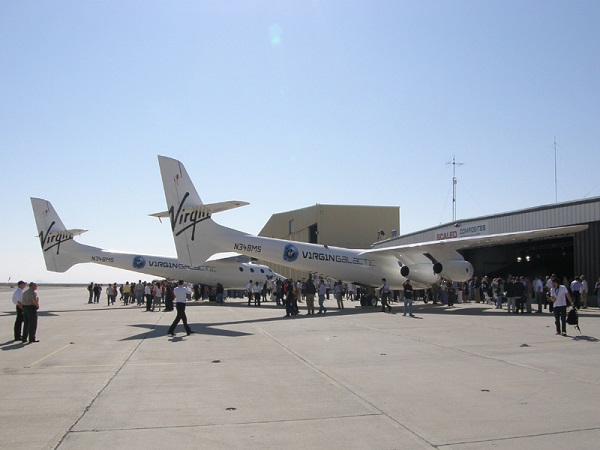Shares in Richard Branson's Virgin Galactic start trading
Here's what happened when Sir Richard floated his space travel business on Wall Street.
29th October 2019 15:07
by Graeme Evans from interactive investor
Here's what happened when Sir Richard floated his space travel business on Wall Street.

Space tourism has provided a new frontier for Wall Street investors to explore after Sir Richard Branson's Virgin Galactic (NYSE:SPCE) made its stock market debut in New York.
The human spaceflight company, which hopes to carry its first tourists next year, was initially valued at $2.3 billion after Virgin reversed into Social Capital Hedosophia Holdings, a cash shell listed on the New York Stock Exchange.
An hour after Sir Richard rang the stock market opening bell on Monday, shares in the first space-launch company to go public had risen by 10% to change hands at $12.90. The euphoria quickly fizzled out, however, as the stock trading under the ticker SPCE came back down to earth to close at $11.75. It opened another 5% lower today.
The loss-making company's lacklustre debut comes with investors already wary of higher-risk companies after the poor post-IPO performances of Uber and Peloton among others.
Virgin Galactic is charging $250,000 for a 90-minute flight from its operations at Spaceport America in New Mexico. The spaceflight will include several minutes of weightlessness and spectacular views of Earth from space.
So far Virgin has reservations from more than 600 people in 60 countries representing about $80 million in total collected deposits, and over $120 million of potential revenue.
In a world of experiences and social media, the company believes that the market for exclusive, experiential products will continue to expand quickly and represents a significant opportunity for future growth.
More than $1 billion has so far been invested in Virgin Galactic since its inception in 2004. The company received over $450 million of proceeds as a result of the Social Capital merger, which has left existing Virgin Galactic shareholders owning nearly 59%.
The venture is now in the final stages of development, having already reached a number of milestones. The inaugural spaceflight in December 2018 was the first and only human space launch from US soil since 2011, while the second in February saw VSS Unity become the first vehicle built for commercial service to carry a non-pilot crew member at Mach 3.
Having reached these landmarks, Virgin believes that the additional capital provided by the merger will provide it with the support needed to reach commercialization.
Financial projections point to ticketed revenues of $562 million by 2023, at which point it should be carrying 1,565 passengers on 270 flights a year on board one of five vehicles. Underlying earnings of $274 million and a margin of 46.4% are forecast.
The company also sees the potential for applying its technologies for other commercial and governmental uses, or to dramatically reduce the time taken for point-to-point travel.
The barriers to entry for potential competitors are also significant, although two of Branson's billionaire rivals - Amazon founder Jeff Bezos and Tesla CEO Elon Musk - also have their own plans for space travel.
These articles are provided for information purposes only. Occasionally, an opinion about whether to buy or sell a specific investment may be provided by third parties. The content is not intended to be a personal recommendation to buy or sell any financial instrument or product, or to adopt any investment strategy as it is not provided based on an assessment of your investing knowledge and experience, your financial situation or your investment objectives. The value of your investments, and the income derived from them, may go down as well as up. You may not get back all the money that you invest. The investments referred to in this article may not be suitable for all investors, and if in doubt, an investor should seek advice from a qualified investment adviser.
Full performance can be found on the company or index summary page on the interactive investor website. Simply click on the company's or index name highlighted in the article.